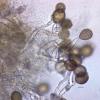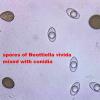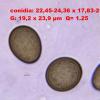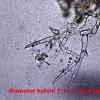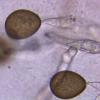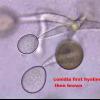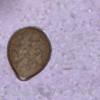
10-09-2025 23:53
 Marcel Heyligen
Marcel Heyligen
Found on Robinia pseudoacasia together with Diapor

11-09-2025 16:57
Our revision of Marthamycetales (Leotiomycetes) is

10-09-2025 17:18
 Blasco Rafael
Blasco Rafael
Hola, encontre este estiercol de vaca estos apotec

02-09-2025 11:34
Thomas Læssøehttps://svampe.databasen.org/observations/10527903

03-09-2025 21:59
Philippe PELLICIERLa Léchère, Col de la Madeleine, alt 1970m, au s

07-09-2025 11:34
 Zuzana Sochorová (Egertová)
Zuzana Sochorová (Egertová)
Hello,I have identified this fungus as Hymenoscyph
An anamorph on the hymenium of Neottiella vivida
François Bartholomeeusen,
26-11-2019 18:41
On October 15, 2019, I found several fruiting bodies on a heathland, which I determined on October 16, after microscopic examination, as Neottiella vivida. Two days later I repeated the examination in the hope that the spore ornamentation had improved. Instead, I found an anamorph. At first I thought of contamination but because of the presence of conidiophores this was ruled out. The, in first instance bright orange hymenium, was two days later covered with a black, powdery layer caused by the brown conidia.
Does anyone have experience with this anamorphic?
Thank you very much in advance,
François Bartholomeeusen
David Malloch,
27-11-2019 03:45

Re : An anamorph on the hymenium of Neottiella vivida
This looks like Harzia acremonioides (syn. Acremoniella atra). I have not seen this species, but I have cultured H. verrucosa, a very similar species with verrucose conidia. Harzia verrucosa is a mycoparasite producing typical contact cells on susceptible fungal hosts, so maybe your specimen was parasitic on Neottiella vivida.
François Bartholomeeusen,
27-11-2019 17:45
Re : An anamorph on the hymenium of Neottiella vivida
Dear David,
Thank you very much, I could never have solved this problem on my own. For me this is one less UFO (Unidentified Fungal Object)!
Kind regards,
François



